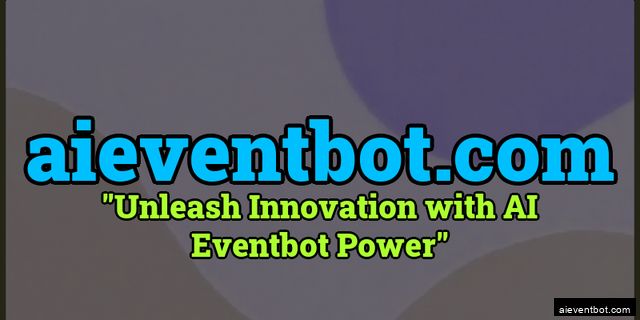Introduction
The landscape of financial planning has shifted in recent years, largely due to a growing emphasis on financial literacy. As more individuals strive to gain control over their financial futures, the demand for accessible education has surged. This surge has led to an innovative intersection between financial planning and educational resources. This blog post focuses on the advantages of integrating educational resources into financial planning.
In the past, financial planning was largely a realm of expertise reserved for financial advisors. However, the advent of technology and democratization of information has transformed this landscape. Now, more than ever, individuals are empowered to take control of their financial futures. Integrating educational resources into financial planning can equip individuals with the knowledge and tools necessary to make informed financial decisions.
As we delve deeper into the realm of financial planning, it becomes evident that the traditional approaches are no longer sufficient to navigate the complexities of modern financial landscapes. The introductory phase sets the tone for a comprehensive understanding of key concepts and strategies that are essential for effective financial management. For instance, in today's digital age, the introduction to financial planning may include discussions on utilizing advanced technology tools for budgeting, investment tracking, and financial goal setting.
Moreover, the evolving regulatory environment plays a crucial role in shaping the introductory aspects of financial planning. Understanding the latest legislative changes and compliance requirements is vital for individuals and professionals entering the field. By incorporating these dynamic elements into the introduction, readers can gain a more holistic perspective on the current landscape of financial planning and the skills needed to navigate it successfully.
The Need for Financial Education
A study by the National Financial Educators Council revealed that Americans estimate that they lost an average of $1,634 in 2020 due to a lack of knowledge about personal finances. This figure underscores the urgent need for financial education. By integrating educational resources into financial planning, individuals can gain the necessary skills to navigate their financial journeys.
Consider the example of a young adult embarking on their career. Armed with foundational knowledge in budgeting, investing, and retirement planning, this individual could potentially avoid common financial pitfalls. Moreover, they could leverage their financial knowledge to make strategic decisions that could enhance their financial security over the long term.
Further emphasizing the critical need for financial education, recent data from the Consumer Financial Protection Bureau indicates that a staggering number of Americans struggle with basic financial concepts like budgeting and saving. This lack of financial literacy not only impacts individuals' ability to manage their own finances effectively but also has broader societal implications, contributing to cycles of debt and financial insecurity.
Moreover, the evolving landscape of financial products and services, such as digital payment platforms and cryptocurrency, underscores the urgency for ongoing financial education. Without a solid foundation in financial principles, individuals may fall prey to predatory lending practices or investment scams, highlighting the importance of empowering individuals with the knowledge and skills needed to make informed financial decisions in today's complex financial world.
Benefits of Integrating Educational Resources into Financial Planning
Integrating educational resources into financial planning provides several advantages. Firstly, it promotes financial literacy. Understanding financial terms and concepts is critical in making informed decisions about personal finances. Secondly, it empowers individuals to take charge of their financial futures. Knowledge is power, and in the realm of financial planning, understanding is the key to unlocking financial freedom.
Take, for instance, the story of Sarah, a self-taught investor who leveraged online educational resources to learn about the stock market. By integrating these resources into her financial planning, Sarah was able to build a diversified portfolio that generated substantial returns. Her story underscores the power of financial education.
Integrating educational resources into financial planning not only enhances financial literacy but also fosters informed decision-making. By leveraging tools like online courses, workshops, and financial literacy programs, individuals can gain a deeper understanding of complex financial concepts, empowering them to make sound investment choices and develop effective budgeting strategies. For instance, platforms offering interactive modules on retirement planning can equip individuals with the knowledge to optimize their savings and pension plans, ensuring a secure financial future.
Practical Steps to Integrate Educational Resources
There are several practical steps to integrate educational resources into financial planning. First, identify reliable sources of financial education. These could range from books and online courses to podcasts and financial literacy programs. Second, commit to continuous learning. As the financial landscape evolves, staying updated with the latest trends and developments is crucial.
A case in point is the rise of cryptocurrencies. As this new form of digital asset gains popularity, individuals need to understand its implications for their financial planning. By leveraging educational resources, individuals can demystify complex concepts like blockchain technology and make informed decisions about whether to include cryptocurrencies in their investment portfolios.
In addition to the initial steps mentioned, it is crucial to establish a timeline for integrating educational resources into financial planning. By setting clear deadlines and milestones, you create a structured approach that ensures consistent progress. For example, you could designate specific months for researching new resources, evaluating their effectiveness, and implementing them into your financial strategy. This timeline not only keeps you accountable but also helps in measuring the impact of each educational resource on your overall financial goals.
Furthermore, collaborating with financial experts or educators can enhance the integration process. Seeking guidance from professionals in the field can provide valuable insights and recommendations on the most relevant educational resources to incorporate. For instance, you could schedule regular consultations with a financial advisor to review your educational materials and receive personalized suggestions based on your specific financial objectives. This collaborative effort ensures that the educational resources you choose align seamlessly with your financial planning needs, maximizing their effectiveness in achieving long-term financial stability.
Potential Challenges and Solutions
While there are significant advantages to integrating educational resources into financial planning, potential challenges exist. One such challenge is the credibility of information sources. With the abundance of financial information available, it can be difficult to discern reliable sources from misleading ones. It is therefore crucial to rely on reputable sources.
Another challenge is the potential for information overload. Confronted with a wealth of information, individuals may feel overwhelmed and unsure where to start. To mitigate this, it can be helpful to break down financial education into manageable topics. Begin with foundational concepts like budgeting and saving, then gradually delve into more complex topics like investing and tax planning.
One potential challenge that individuals may face when integrating educational resources into financial planning is the overwhelming amount of information available. With the vast array of online articles, courses, and tools, it can be difficult to determine which resources are credible and relevant to one's specific financial goals. This challenge can lead to confusion and decision paralysis, hindering the effectiveness of educational efforts.
To address this challenge, individuals can consider seeking guidance from certified financial planners or advisors who can help curate and tailor educational resources to their unique needs. By working with professionals, individuals can navigate the sea of information more effectively and ensure that they are focusing on resources that align with their financial objectives. Additionally, utilizing reputable financial planning platforms that offer personalized recommendations and tools can streamline the learning process and enhance the overall educational experience.
Conclusion
The integration of educational resources into financial planning is a powerful tool for enhancing financial literacy and empowering individuals to take control of their financial futures. While challenges exist, the potential benefits far outweigh them. By leveraging reliable educational resources and committing to continuous learning, individuals can navigate the financial landscape with confidence and foresight.
In conclusion, the journey towards financial literacy is a continuous one. As technology evolves and the financial landscape shifts, it is crucial to stay informed and adaptable. By integrating educational resources into financial planning, individuals can equip themselves with the knowledge and tools needed to traverse their financial journeys successfully.
In conclusion, it is evident that incorporating educational resources into financial planning can significantly impact one's financial well-being. By leveraging tools such as online courses, webinars, and workshops focused on personal finance management, individuals can gain vital insights and skills to make informed decisions about their money. These resources not only offer practical knowledge on budgeting, investing, and retirement planning but also empower individuals to navigate complex financial landscapes with confidence.
Moreover, a key takeaway from this discussion is the importance of continuous learning in financial planning. As financial markets evolve and economic conditions fluctuate, staying informed and up-to-date is crucial for adapting strategies and optimizing outcomes. Embracing a mindset of lifelong learning ensures that individuals remain resilient and proactive in managing their finances effectively. Therefore, integrating educational resources into financial planning is not just a one-time investment but a commitment to ongoing education and growth for long-term financial success.














